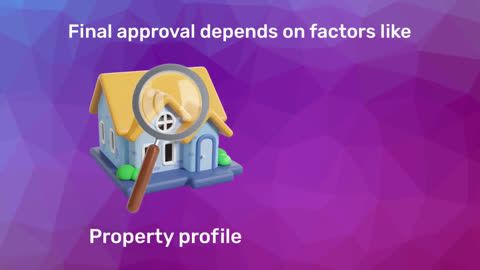What is CERSAI?
Before diving into the details of the RBI circular, it’s essential to understand what CERSAI is. The Central Registry of Securitisation Asset Reconstruction and Security Interest of India (CERSAI) is a central online registry established by the government to track and record all charges created by lenders on collateral offered by borrowers. Essentially, it helps prevent the duplication of property transactions and ensures transparency in the lending process.The role of CERSAI in the financial ecosystem
CERSAI plays a pivotal role in safeguarding the interests of financial institutions and borrowers alike. By maintaining a central registry of secured assets, CERSAI helps prevent fraud and ensures that lenders have a clear view of any existing charges on a property. This is particularly important in the context of home loans, where the property is often used as collateral.Purpose of CERSAI RBI circular
The primary purpose of the CERSAI RBI circular is to enforce the mandatory registration of charges on movable and immovable assets with the Central Registry of Securitisation Asset Reconstruction and Security Interest of India (CERSAI). This move is designed to achieve several key objectives:- Preventing fraud: By maintaining a central registry of secured assets, the circular helps prevent fraudulent activities like double financing, where multiple loans are taken against the same property.
- Enhancing transparency: The circular ensures that all financial institutions have access to accurate and up-to-date information regarding the status of a property’s charges, fostering transparency in the lending process.
- Protecting borrowers: By mandating the registration of charges, the circular provides borrowers with a clear understanding of any existing liabilities on their property, enabling them to make informed financial decisions.
The CERSAI RBI circular: Key highlights
The RBI circular related to CERSAI introduces specific guidelines and procedures that financial institutions must follow when registering security interests. Here are some of the key highlights of the circular:- Mandatory registration: The circular mandates that all financial institutions register any charges created on movable and immovable assets with CERSAI. This includes charges related to home loans, personal loans, and other secured credit products.
- Timely updates: Financial institutions are required to update the CERSAI registry promptly whenever a charge is created, modified, or satisfied. This ensures that the registry remains up-to-date and accurate.
- Enhanced transparency: By mandating the registration of charges, the RBI aims to enhance transparency in the lending process. Borrowers can now access information about existing charges on a property, helping them make informed decisions.
- Penalties for non-compliance: The circular outlines penalties for financial institutions that fail to comply with the registration requirements. This underscores the importance of adhering to the guidelines laid out by the RBI.
Impact of CERSAI RBI circular on banks and NBFCs
The CERSAI RBI circular has had a profound impact on both banks and NBFCs. For banks, the circular has added an additional layer of responsibility, requiring them to ensure that all charges on assets are accurately registered and updated. This has led to a more rigorous due diligence process, as banks now need to cross-check the CERSAI registry before approving any secured loans.For NBFCs, the circular has similarly increased the need for meticulous record-keeping and compliance. Since NBFCs also deal with secured lending, they must adhere to the same stringent registration and reporting standards as banks. This has enhanced the overall transparency and trustworthiness of the financial system, making it more difficult for borrowers to engage in fraudulent activities.
Compliance requirements for financial institutions
- Timely registration: All security interests must be registered with CERSAI within the stipulated timeframe.
- Regular updates: Financial institutions must regularly update the CERSAI registry to reflect any changes in the status of charges.
- Accurate reporting: Lenders must ensure that the details entered into the CERSAI registry are accurate and complete.
- Internal audits: Regular internal audits should be conducted to ensure compliance with CERSAI regulations.
- Training for staff: Institutions should provide adequate training to staff involved in the registration and updating process to avoid errors.
Steps to adhere to the CERSAI RBI circular
- Review the circular: Start by thoroughly reviewing the CERSAI RBI circular to understand its requirements.
- Assess current practices: Evaluate your institution’s current processes for registering and updating charges on secured assets.
- Implement necessary changes: Make any necessary adjustments to your internal procedures to ensure compliance with the circular.
- Register charges: Register all existing and new charges with CERSAI as required.
- Monitor compliance: Continuously monitor compliance with the circular through regular audits and reporting.
- Update regularly: Ensure that any changes to the status of charges are promptly updated in the CERSAI registry.
- Train staff: Provide training to relevant staff to ensure they are familiar with the new procedures.
CERSAI registration process for lenders
The CERSAI registration process for lenders involves several steps designed to ensure that all security interests in properties are accurately recorded. First, the lender must gather all necessary documentation related to the secured asset, including details of the borrower, the property, and the loan. Next, this information is entered into the CERSAI online portal, where the lender creates a new charge against the property.Once the charge is registered, the lender receives a unique CERSAI registration number, which is used to track the charge in the future. Lenders must then update the CERSAI registry whenever there are changes to the charge, such as when the loan is repaid or the property is sold.
How to access and use CERSAI portal
Accessing and using the CERSAI portal is a straightforward process that allows lenders to register and manage charges on secured assets efficiently. To access the portal, financial institutions need to follow the CERSAI login process, which involves entering their unique credentials to gain access. Once logged in, they can create new registrations, update existing records, and search the registry for information on specific properties.The portal is designed to be user-friendly, with clear instructions and prompts to guide users through the registration process. Additionally, the portal provides tools for tracking the status of registrations and generating reports, ensuring that all necessary information is easily accessible to lenders.
Common mistakes to avoid in CERSAI compliance
- Incorrect data entry: Ensure that all details entered into the CERSAI registry are accurate, as incorrect data can lead to compliance issues.
- Delayed registration: Failing to register charges within the stipulated timeframe can result in penalties.
- Inadequate documentation: Ensure that all necessary documents are collected and verified before registering a charge.
- Neglecting updates: Regularly update the CERSAI registry to reflect any changes in the status of the charge.
- Insufficient training: Make sure that all staff involved in the CERSAI process are adequately trained to avoid errors.
Explore Bajaj Housing Finance Home Loan
When it comes to home loans, choosing the right lender is crucial. Bajaj Housing Finance offers competitive home loan options with attractive interest rates, flexible repayment terms, and minimal processing fees. Whether you’re looking to buy your dream home, transfer an existing loan, or take a top-up loan, Bajaj Housing Finance has a solution tailored to your needs.Additionally, Bajaj Housing Finance provides quick and easy access to top-up loans, allowing you to meet your financial goals without the hassle of multiple loan applications.
Here are a few reasons why you should opt for a home loan from Bajaj Housing Finance:
1. Competitive interest rates: Bajaj Housing Finance offers some of the most competitive home loan interest rates in the market, ensuring your loan remains affordable.
2. Flexible tenure: Choose a repayment period that best suits your financial situation, up to 32 years.
3. Quick Processing: With a streamlined application process, Bajaj Housing Finance ensures quick loan approval and disbursement, allowing you to secure your dream flat without delay.
4. Affordable EMIs: With EMIs as low as Rs. 722/lakh*, managing your monthly payments is easier, ensuring that your loan doesn’t strain your finances.
So, why wait? Apply for a home loan today.




